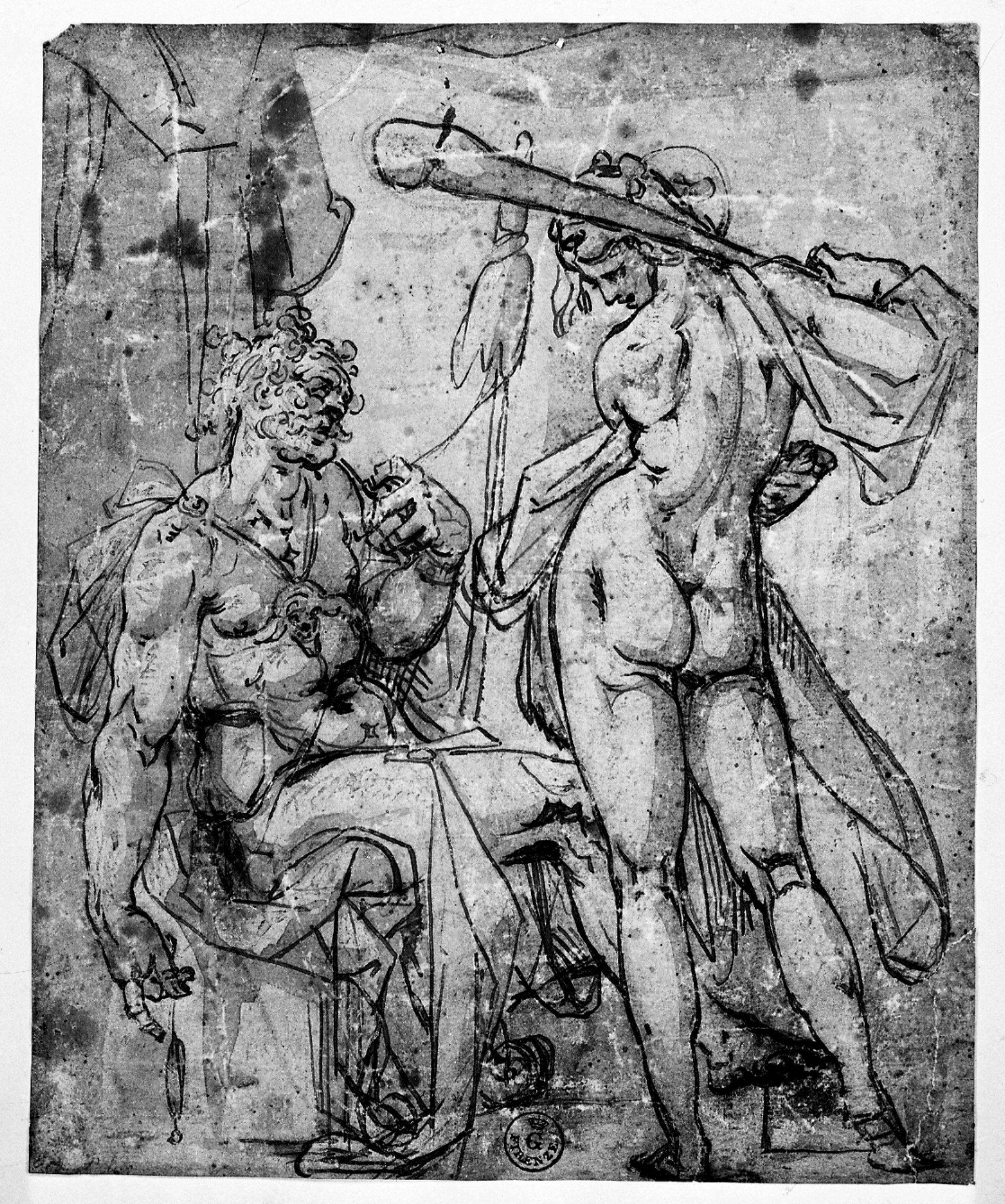Hercules and Omphale
Bartholomeus Spranger (Antwerp 1546 - Prague 1611)
On the recto, bottom left, in pencil, in modern handwriting ‘E [G]olzius’; on the verso, top, in pencil, in nineteenth century handwriting (P. N. Ferri?) ‘1189 Enrico Goltzio Cart. 636 – D. 2362’. On the mount, on the verso, top left, in black pencil, ‘E. K. J. Řezníček ‘Spranger si Per’
This drawing, carried out by Bartholomeus Spranger during his extensive stay at the court of Emperor Rudolf II of Habsburg in Prague, depicts Hercules enslaved by the mythical queen of Lydia Omphale, who wears the pelt of the Nemean lion and brandishes a club as she forces the hero to twist the wool while dressed in women’s clothing. In the cultural context of the court of Rudolf II, the meaning of this mythological subject, skillfully translated by Spranger into a drawing with a veiled erotic undertone, is twofold: firstly, it alludes to the power of love exerted by a woman over a man according to a rather popular theme in Northern Europe; secondly, it symbolizes the alchemical fusion of the two genders, in accordance with the rather esoteric interests of the Emperor.
The shapes of the two figures are reminiscent of statues and sculptures, a testament to Spranger's knowledge of the figurative languages of central and northern Italian artistic traditions which the Flemish painter would have encountered between 1565 and 1575 during his visits to Milan, Parma and Rome.
The drawing, possibly drafted as a preparatory study for a painting of the same subject by the artist in 1585 which is currently displayed at the Gemäldegalerie of the Kunsthistorisches Museum in Vienna (inv. no. 1126), was most certainly used as the model for the burin engraving by Anton Eisenhoit shortly afterwards in 1590.
